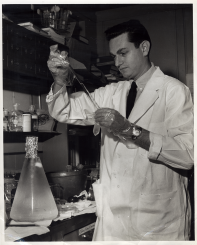The goal of Project Euclid—a project of the Cornell University Library—is to provide an online repository for mathematics and statistics publications, with the goal of offering content as open-access. The website hosts full journals and book series from dozens of publishers, with topics that range from statistics and probability, applied mathematics, logic, and computer science. Site visitors can search the collection by a number of parameters such as authors, keyword, or full text, and each article or journal on the website is conveniently marked with an indicator that tells whether the content is freely accessible without a subscription. (Approximately 70% of content on the site is currently open-access.) Additionally, the website provides support for researchers, librarians, and publishers. Project Euclid is a convenient collection of mathematical journals and articles all together in one place.

“Excellent” rating **** No weak points
Source: “Best of the Web”, GEN: Genetic Engineering & Biotechnology News, Nov. 15, 2016, p.42.






You must be logged in to post a comment.